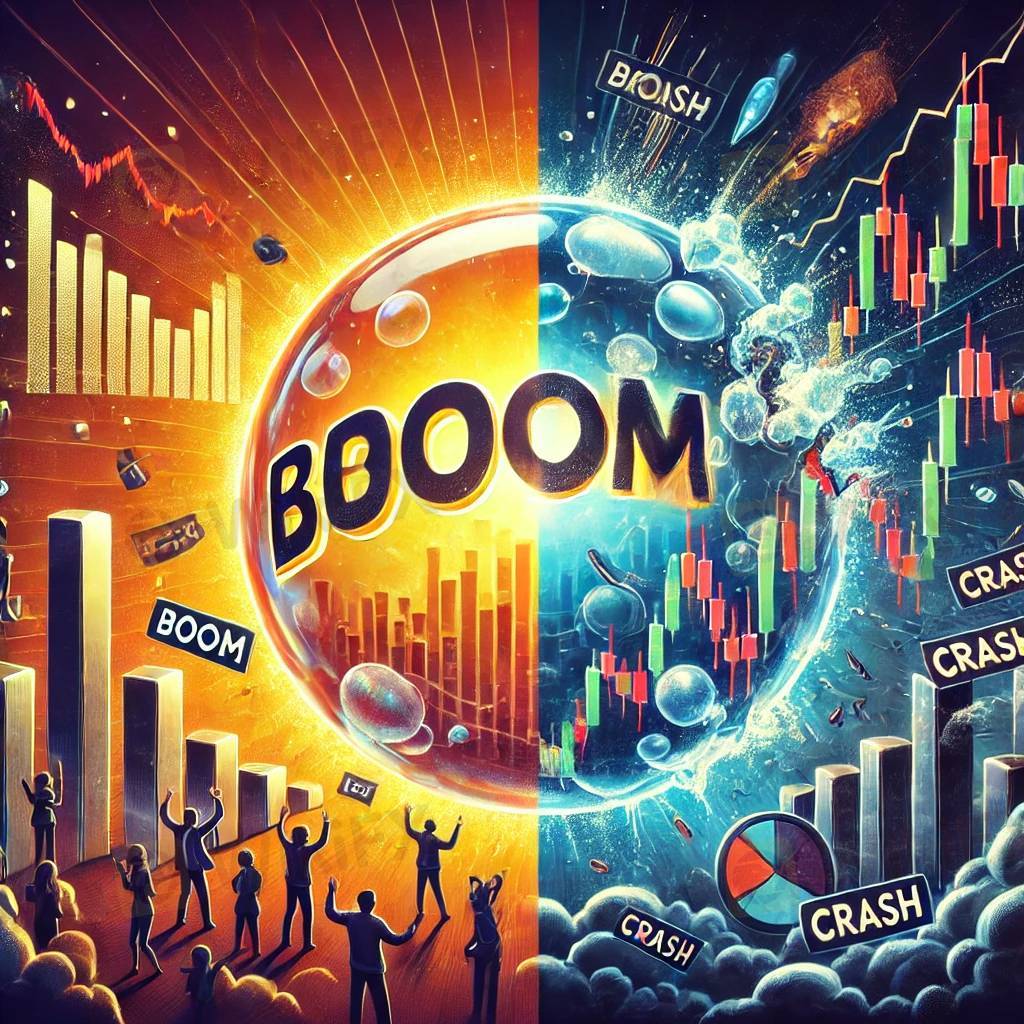
2025-02-17 16:54
IndustryFinancial Market Bubbles and Crashes
#firstdealofthenewyearastylz
Financial markets are prone to cycles of rapid price increases followed by sharp declines, known as bubbles and crashes. These events are often driven by speculation, excessive optimism, and market psychology rather than fundamental economic factors. Understanding these phenomena is crucial for investors, policymakers, and economists.
What is a Financial Bubble?
A financial bubble occurs when the price of an asset (stocks, real estate, commodities, etc.) rises significantly beyond its intrinsic value due to speculative buying. Bubbles are fueled by investor euphoria, easy credit, and herd behavior.
Phases of a Bubble:
1. Stealth Phase: Smart investors recognize potential in an asset, leading to early accumulation.
2. Awareness Phase: More investors join, pushing prices higher as media attention grows.
3. Mania Phase: Widespread speculation leads to irrational exuberance, where prices skyrocket.
4. Blow-off Phase:The bubble bursts, causing a rapid price collapse as panic selling ensues.
What is a Market Crash?
A market crash is a sudden and dramatic drop in asset prices, typically triggered by the bursting of a financial bubble, economic downturns, or external shocks (e.g., geopolitical crises, pandemics). Crashes can erase billions in market value within days or weeks.
Causes of Market Crashes:
- Overvaluation & Speculation: Asset prices far exceed their fundamental value.
- Leverage & Debt: Excessive borrowing amplifies losses when prices fall.
- Panic Selling:Fear and herd mentality accelerate price declines.
- External Shocks: Unexpected events (e.g., financial crises, policy changes) can destabilize markets.
*Historical Examples of Bubbles & Crashes*
1. Tulip Mania (1637):One of the earliest recorded bubbles, where tulip bulb prices in the Netherlands soared before crashing.
2. South Sea Bubble (1720):A speculative frenzy around the South Sea Company led to financial ruin in Britain.
3. 1929 Stock Market Crash: The Great Depression followed after an era of speculative stock market growth.
4. Dot-Com Bubble (1999-2000):Internet stocks surged before collapsing due to overvaluation.
5. 2008 Financial Crisis: The housing market bubble burst, triggering a global economic downturn.
Lessons & Prevention Strategies
• Diversification: Avoid concentrating investments in a single asset or market.
• Fundamental Analysis: Focus on real value rather than speculative trends.
- Risk Management:Use stop-loss strategies and avoid excessive leverage.
- Regulation & Oversight:Governments and financial institutions play a role in curbing excessive speculation.
Understanding financial bubbles and crashes can help investors make informed decisions and mitigate losses in volatile markets.
Like 0

Bluebella
Broker
Hot content
Industry
Event-A comment a day,Keep rewards worthy up to$27
Industry
Nigeria Event Giveaway-Win₦5000 Mobilephone Credit
Industry
Nigeria Event Giveaway-Win ₦2500 MobilePhoneCredit
Industry
South Africa Event-Come&Win 240ZAR Phone Credit
Industry
Nigeria Event-Discuss Forex&Win2500NGN PhoneCredit
Industry
[Nigeria Event]Discuss&win 2500 Naira Phone Credit
Forum category

Platform

Exhibition

Agent

Recruitment

EA

Industry

Market

Index
Financial Market Bubbles and Crashes
 Hong Kong | 2025-02-17 16:54
Hong Kong | 2025-02-17 16:54#firstdealofthenewyearastylz
Financial markets are prone to cycles of rapid price increases followed by sharp declines, known as bubbles and crashes. These events are often driven by speculation, excessive optimism, and market psychology rather than fundamental economic factors. Understanding these phenomena is crucial for investors, policymakers, and economists.
What is a Financial Bubble?
A financial bubble occurs when the price of an asset (stocks, real estate, commodities, etc.) rises significantly beyond its intrinsic value due to speculative buying. Bubbles are fueled by investor euphoria, easy credit, and herd behavior.
Phases of a Bubble:
1. Stealth Phase: Smart investors recognize potential in an asset, leading to early accumulation.
2. Awareness Phase: More investors join, pushing prices higher as media attention grows.
3. Mania Phase: Widespread speculation leads to irrational exuberance, where prices skyrocket.
4. Blow-off Phase:The bubble bursts, causing a rapid price collapse as panic selling ensues.
What is a Market Crash?
A market crash is a sudden and dramatic drop in asset prices, typically triggered by the bursting of a financial bubble, economic downturns, or external shocks (e.g., geopolitical crises, pandemics). Crashes can erase billions in market value within days or weeks.
Causes of Market Crashes:
- Overvaluation & Speculation: Asset prices far exceed their fundamental value.
- Leverage & Debt: Excessive borrowing amplifies losses when prices fall.
- Panic Selling:Fear and herd mentality accelerate price declines.
- External Shocks: Unexpected events (e.g., financial crises, policy changes) can destabilize markets.
*Historical Examples of Bubbles & Crashes*
1. Tulip Mania (1637):One of the earliest recorded bubbles, where tulip bulb prices in the Netherlands soared before crashing.
2. South Sea Bubble (1720):A speculative frenzy around the South Sea Company led to financial ruin in Britain.
3. 1929 Stock Market Crash: The Great Depression followed after an era of speculative stock market growth.
4. Dot-Com Bubble (1999-2000):Internet stocks surged before collapsing due to overvaluation.
5. 2008 Financial Crisis: The housing market bubble burst, triggering a global economic downturn.
Lessons & Prevention Strategies
• Diversification: Avoid concentrating investments in a single asset or market.
• Fundamental Analysis: Focus on real value rather than speculative trends.
- Risk Management:Use stop-loss strategies and avoid excessive leverage.
- Regulation & Oversight:Governments and financial institutions play a role in curbing excessive speculation.
Understanding financial bubbles and crashes can help investors make informed decisions and mitigate losses in volatile markets.
Like 0
I want to comment, too
Submit
0Comments

There is no comment yet. Make the first one.

Submit
There is no comment yet. Make the first one.